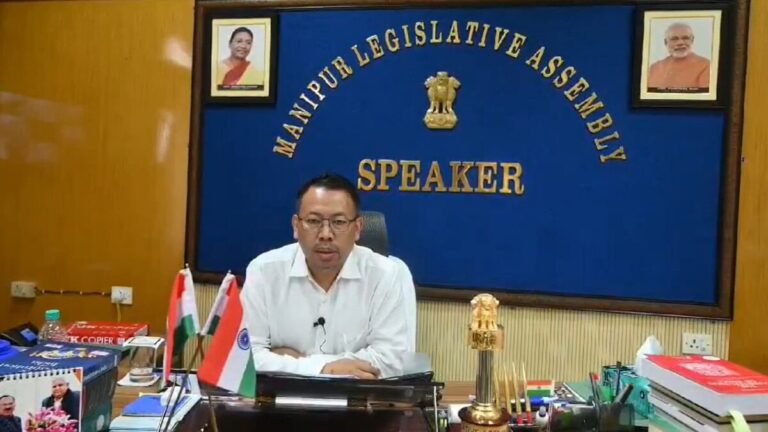Heavy Rain in Mumbai Leads to Waterlogging, Traffic Disruptions, and Flight Diversions
Summary
Mumbai has been hit by heavy rain, leading to significant waterlogging, traffic disruptions, and flight delays. Several areas in the city faced extensive water accumulation, making roadways nearly impassable and disrupting daily life. Some flights were diverted as a result of the adverse weather conditions, adding to the chaos. Citizens have been advised to remain cautious and avoid unnecessary travel as municipal authorities continue to manage the situation.
Introduction: Mumbai’s Monsoon Mayhem – When the City Comes to a Standstill
Mumbai is no stranger to monsoons, but every year, it seems like the city gets a new reminder of just how powerful nature can be. The recent downpour that caused extensive waterlogging, traffic snarls, and flight diversions has brought the city to its knees. For a bustling metropolis like Mumbai, which prides itself on its resilience, days like these are a stark reality check.
But what makes the rain so disruptive, year after year? Why does a city that sees heavy rainfall every monsoon season still struggle to cope with the consequences? In this article, we’ll explore the recent rain-induced chaos in Mumbai, breaking down the reasons for the recurring issues, how authorities are handling the situation, and what needs to change moving forward.
Waterlogging in Mumbai: A Persistent Problem
Waterlogging is a term that’s become synonymous with Mumbai, especially during the monsoon months. But why does it continue to be such a big problem despite the city’s awareness and past experiences?
Why Does Waterlogging Happen in Mumbai?
Mumbai’s infrastructure is severely strained during the monsoon season. The city’s drainage systems, some of which are decades old, simply can’t handle the volume of water that comes down during heavy rains. As a result, streets and low-lying areas quickly flood, making travel difficult and sometimes impossible. The city’s unique topography, with its narrow roads, crowded spaces, and low-lying areas near the sea, only exacerbates the problem.
Impact on Daily Life
Waterlogging doesn’t just make the streets look like mini rivers—it impacts nearly every aspect of daily life. For those commuting to work or school, flooded roads mean hours spent in traffic, often leading to canceled meetings, missed appointments, and sheer frustration. Beyond that, essential services such as emergency vehicles are also delayed, posing a risk to public safety.
Traffic Disruptions: A City at a Standstill
Mumbai’s traffic is infamous on any given day, but when the rains come, the situation goes from bad to worse. With water clogging major highways and streets, vehicles come to a standstill, and commute times skyrocket.
What Causes the Traffic Jams?
The main issue is that Mumbai’s roads simply aren’t built to handle large amounts of water. Even with moderate rain, water pools quickly, leading to slower traffic and often complete gridlock. Public transport services such as buses and taxis are equally affected, leaving commuters stranded for hours.
Public Transport Struggles
Mumbai’s lifeline, the suburban railway, isn’t immune to these disruptions either. During heavy rains, train services are delayed or sometimes even halted due to water on the tracks. When the roads are jammed and trains aren’t running, the city essentially grinds to a halt.
Flight Diversions: When Mumbai’s Skies Are Just as Jammed as the Streets
In addition to ground-level disruptions, the skies over Mumbai aren’t much better. With visibility reduced due to heavy rain and storms, several flights had to be diverted to other cities.
How Are Flights Affected?
Flight operations during heavy rains are particularly tricky. Poor visibility and waterlogged runways can make it unsafe for planes to take off or land. As a result, many airlines choose to divert flights to nearby airports where the weather is more favorable. While this ensures passenger safety, it adds to the inconvenience of already delayed travel plans.
The Ripple Effect of Flight Diversions
When flights are diverted, it’s not just about moving planes from one city to another. Passengers are affected, and so are cargo operations. Hotels near the airport see an influx of stranded travelers, and the city’s overall air traffic flow takes a hit, leading to further delays and cancellations.
Authorities’ Response: Is It Enough?
Every monsoon season, the municipal authorities in Mumbai roll out a range of preemptive measures aimed at mitigating the effects of heavy rain. But judging by the current situation, it seems these measures fall short of what’s needed.
What Are the BMC’s Efforts?
The Brihanmumbai Municipal Corporation (BMC) claims to have upgraded drainage systems and taken steps to clean up clogged drains. Additionally, the Disaster Management team is often deployed during periods of heavy rainfall to ensure citizen safety and provide relief when necessary.
However, despite these efforts, Mumbai’s infrastructure appears woefully unprepared for the monsoon’s onslaught. The sheer volume of rain that the city experiences during a single storm can overwhelm the best of plans, leading to the same cycle of waterlogging, traffic jams, and flight disruptions year after year.
Citizen Reactions
Mumbai’s citizens are used to the monsoon mess, but that doesn’t mean they’re happy about it. Many have taken to social media to express their frustration over the lack of effective long-term solutions to the city’s waterlogging issues. While some acknowledge that the BMC is doing its best under tough conditions, others feel that more could be done in terms of infrastructure development and flood management.
Long-Term Solutions: What Can Be Done to Prevent Waterlogging and Disruptions?
Given that the monsoon is a yearly phenomenon, it’s clear that Mumbai needs more robust solutions to tackle the issues of waterlogging, traffic disruptions, and flight delays.
Infrastructure Overhaul
One of the most critical steps that need to be taken is upgrading the city’s drainage systems. The current setup simply cannot handle the amount of rain that Mumbai receives during the monsoon. While the BMC has made some improvements, a large-scale overhaul is necessary to ensure the city doesn’t flood every year.
Climate-Resilient City Planning
As climate change continues to exacerbate weather patterns, cities like Mumbai will need to adopt climate-resilient city planning models. This includes developing areas that are less prone to flooding, incorporating rainwater harvesting systems, and ensuring that new infrastructure projects are designed with extreme weather conditions in mind.
Public Awareness and Preparedness
On a smaller scale, citizens also have a role to play in reducing the impact of the monsoon. Simple actions like avoiding littering, which can block drainage systems, can go a long way in preventing waterlogging. Additionally, being prepared for potential disruptions and staying updated with weather forecasts can help reduce the chaos that comes with every downpour.
FAQs
- Why does Mumbai experience severe waterlogging every monsoon?
Mumbai’s old drainage systems and the city’s low-lying areas make it highly susceptible to waterlogging, especially during heavy rainfall. - How does waterlogging affect daily life in Mumbai?
Waterlogging disrupts traffic, delays public transport, and can sometimes even cause power outages and health issues due to standing water. - What is the BMC doing to address waterlogging?
The BMC has upgraded drainage systems and deployed disaster management teams, but the city’s infrastructure is still struggling to handle the intensity of monsoon rains. - Are flight diversions common during heavy rains in Mumbai?
Yes, when visibility is low and runways are waterlogged, flights are often diverted to nearby cities to ensure passenger safety. - What long-term solutions are needed to prevent waterlogging in Mumbai?
A complete overhaul of the drainage system, climate-resilient urban planning, and increased public awareness are essential for tackling waterlogging issues in the long term.




